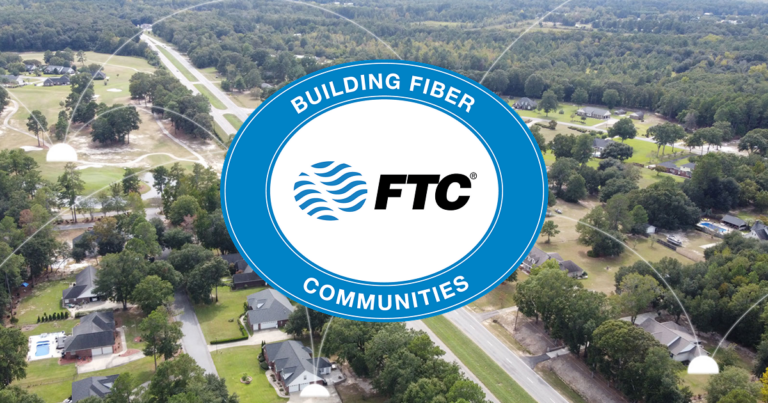In the past, when on-the-go workers needed an internet connection for their digital devices such as laptops and tablets, they were forced to flock to coffee shops, libraries and other (often crowded) places offering public Wi-Fi. But thanks to an increasingly popular capability delivered by today’s smartphone technology, these workers now have a new and much more flexible option for connecting.
How Does a Mobile Hotspot Work?
Mobile hotspots relay your mobile data connection from a phone or dedicated hotspot device to your other WiFi devices, allowing you to connect laptops, tablets, and even printers to your cellular data as if your phone or hotspot device is a WiFi router. By setting up a mobile hotspot on their smartphones, workers can get most of the benefits of a Wi-Fi connection nearly anywhere through their cellular service.
And to add even more value to the technology, hybrid workers are not the only smartphone owners who can benefit from the portable productivity that a mobile hotspot can provide. Other types of smartphone users can easily leverage the advantages of mobile hotspots, too.
What Are the Advantages of a Mobile Hotspot?
- On-the-go work: Hybrid workers can enhance their productivity by reaping the benefits of a mobile hotspot. With one set up, workers can easily connect to the internet, even in places where no Wi-Fi signal is available. And by doing so, they can send and receive emails, upload and download files, perform internet-based research, and complete a long list of other internet-connected tasks from anywhere with a cellular signal available.
- Mobile gaming connections: As many gamers know, mobile hotspots can support on-the-go play, too. A prime example can be seen in portable gaming systems such as the Nintendo Switch, which supports competitive gameplay with other online users when connected to the internet. While the usual Wi-Fi connection may be unavailable when gaming on the go, such as when taking a lengthy car or train trip, connecting to a mobile hotspot can quickly get gamers in on the online action.
- A versatile streaming solution: Similarly, smart video-viewing devices can connect to a mobile hotspot when no Wi-Fi is available for streaming internet-provided video feeds. This can allow for the viewing of television shows, movies, sporting events and other streaming content on these larger-screen devices when a Wi-Fi connection is not available.
- A more secure connection in public: Even in places where public Wi-Fi is available, users sending and receiving particularly sensitive information such as personal or financial details might choose to avoid connecting to it. Instead, by connecting to a cellular network via a personal mobile hotspot, users can largely avoid the security risks such as malware, spyware and man-in-the-middle attacks that unknown public networks can sometimes pose.
- Internet when wired connections go down: Most internet options require power. Even WiFi requires electricity to power the modem and router. A mobile hotspot only requires a charged phone battery and that any devices you want to connect to your hotspot be charged. You can even recharge your hotspot from your vehicle if needed. So if your home is subject to regular, or even occasional power outages during bad storms a mobile hotspot is a great way to keep you connected.
Where Does a Mobile Hotspot Work?
Mobile hotspots work anywhere your phone or hotspot device can receive a cellular data signal. Whether the kids want to watch a movie in the backseat on a cross-country road trip, or you want to check into work from a campsite, mobile hotspots allow you to share cellular data with any WiFi-enabled device.
How To Set Up a Mobile Hotspot With Your PhoneMost modern smartphones are capable of providing mobile hotspots. And many of today’s wireless plans allow for mobile hotspot usage.
To set up and connect to a mobile hotspot, smartphone users can perform the following steps (which might vary slightly, depending on the device being used):
- Navigate to the Settings menu, which is typically done by clicking the gear icon on the smartphone’s home screen.
- Choose “Personal Hotspot” on an Apple device, or “Connections” followed by “Mobile Hotspot & Tethering” on an Android device.
- The hotspot can now be activated with the “Allow Others to Join” switch on an Apple device, or by tapping “Mobile hotspot” toggle switch on an Android device.
- On Apple devices, the hotspot network name will now appear on the Personal Hotspot settings page, and the password needed to join it will appear next to “Wi-Fi Password.” This information can now be used on the device looking to connect to the hotspot to make a connection.
Similarly, on Android devices, the hotspot network name and password will now appear on the Mobile Hotspot & Tethering settings page. To join the hotspot network, users can employ this information to connect via their Wi-Fi-enabled devices.
Looking to harness the area’s most reliable wireless network so you can get your work done on the go? The FTC Wireless cellular network features more than 140 area towers — so you can get a strong signal wherever your travels may take you. Visit ftc.net today to explore our promotions and wireless plans that allow mobile hotspot use.




